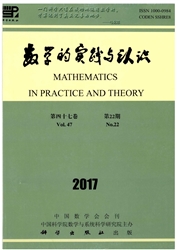

 中文摘要:
中文摘要:
基于引入废弃物产生的投入产出模型,从最终需求视角对2007、2010和2012年北京市典型固体废弃物产生的驱动因素进行实证分析.结果表明:秸秆产生的驱动因素由市内消费转变为调出,调出驱动产生的秸秆由2007年的20%增加到2012年的70%;一般工业固体废弃物产生的驱动因素主要是调出,产生的废弃物由2007年的36%增加到2012年的81%;建筑垃圾产生的驱动因素主要是投资,产生的建筑垃圾居高不下,2007年和2012年均达总量的91%;生活垃圾产生的驱动因素主要是调出和消费,其中调出驱动产生的生活垃圾由2007年的38%增加到2012年的49%,市内消费驱动产生的生活垃圾稳定在30%左右.
 英文摘要:
英文摘要:
Based on an Input-Output model by introducing the production of solid waste, the paper analyzes driving factors of Beijing's typical solid waste in 2007, 2010 and 2012 from the perspective of final demand. The results are as follows: The main driving factor of the straw is outflow replacing the local consumption, whose generation amount has a significant increase from 20% of the total in 2007 to 70% in 2012; the main driving factor of the general industrial solid waste is outflow, whose generation amount has a significant increase from 36% in 2007 to 81% in 2012; the main driving factor of construction waste is investment, whose generation amount remains high and accounts for 91% in 2007 and 2012; the main driving factor of garbage is outflow and the local consumption, and the generation amount of outflow increases from 38% in 2007 to 49% in 2012, while that of the local consumption is stable at around 30%.
 同期刊论文项目
同期刊论文项目
 同项目期刊论文
同项目期刊论文
 期刊信息
期刊信息
